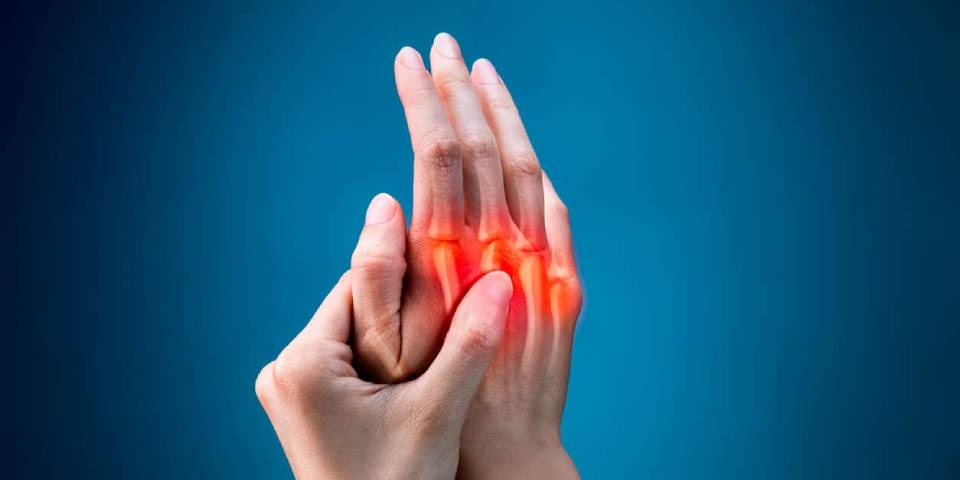
- 27/09/2024
- Dr. Ashwini Gaurav
- 0 Comments
- Blog
6 common types of arthritis and related conditions
Arthritis is an overall health issue in India, affecting more than 210 million people, or over 15% of the population. Despite its frequency, arthritis is constantly misunderstood as a condition affecting only older adults. In reality, it can affect anyone, from children to seniors, and comes in multiple forms, each with unique symptoms and treatments.
In this blog, we will explore six of the most common types of arthritis and affiliated conditions. With insights from Dr. Ashwini Gaurav, the best arthritis doctor in Patna, we’ll help you better understand these conditions and how to handle them effectively for a better quality of life.
What is Arthritis?
At its core, arthritis refers to inflammation in the joints. This inflammation can cause pain, stiffness, and swelling, making movement tough. But arthritis is not precisely one condition; it’s an umbrella term covering numerous conditions affecting joints, bones, muscles, and other connective tissues. Some kinds of arthritis result from wear and tear, while others are driven by the immune system attacking the body.
6 most common types of arthritis:
1. Osteoarthritis (OA):
Osteoarthritis is the most common shape of arthritis, constantly related to “wear-and-tear” arthritis. It occurs when the cartilage that cocoons the ends of bones in your joints gradually deteriorates, leading to bone-on-bone disunion, and causing pain and stiffness.
Symptoms:
- Joint pain and stiffness, especially after resting
- Reduced flexibility and range of motion
- Bone spurs around the affected joints
Treatment:
Osteoarthritis can be handled through lifestyle changes like weight loss, physical remedies, and low-impact exercises. Over-the-counter pain relievers, like ibuprofen, and prescription medications can support reduced symptoms. In severe cases, joint replacement surgery may be necessary.
2. Rheumatoid Arthritis (RA):
Rheumatoid arthritis is an autoimmune condition where the body’s immune system inaptly attacks the joint lining. It primarily affects lower joints( like fingers and toes) but can also affect internal organs, eyes, and skin.
Symptoms:
- Warm, swollen, and tender joints
- Fatigue and fever
- Symmetrical joint pain (both sides of the body)
Treatment:
Early diagnosis is critical for RA. Treatment generally involves specifics like DMARDs(disease-modifying antirheumatic drugs) and biologics to decelerate the complaint’s progression. Physical therapy and regular exercise also help ameliorate joint flexibility.
3. Fibromyalgia:
Though not technically a form of arthritis, fibromyalgia is frequently accompanied by arthritis because it causes widespread musculoskeletal pain. It’s believed to affect the way the brain processes pain signals, developing painful sensations.
Symptoms:
- Widespread pain and tenderness
- Fatigue, sleep disturbances, and memory problems
- Sensitivity to touch, light, and sound
Treatment:
There’s no cure for fibromyalgia, but symptoms can be treated through medicines like pain relievers, antidepressants, and anti-seizure medicines. Gentle exercises, similar to yoga and swimming, and relaxation ways also give relief.
4. Psoriatic Arthritis (PsA):
Psoriatic arthritis is a form of arthritis that affects some people with psoriasis, a skin condition defined by red, scaled spots. In PsA, joint pain and inflammation happen alongside skin symptoms.
Symptoms:
- Swollen fingers and toes (often resembling sausages)
- Nail changes like pitting or detachment
- Stiffness in the joints, especially in the morning
Treatment:
Psoriatic arthritis is treated with NSAIDs, DMARDs, and biologics to reduce inflammation. Treating both the skin and joint symptoms is needed, so a dermatologist and rheumatologist frequently work together to make a comprehensive care plan.
5. Lupus:
Lupus is an autoimmune disorder that can affect various parts of the body, including the joints, skin, kidneys, heart, and lungs. When it affects the joints, it causes symptoms like rheumatoid arthritis, but lupus can also create more wide issues.
Symptoms:
- Common pain and swelling
- Fatigue, fever, and skin rashes( including the ” butterfly ” rash on the face)
- Sensitivity to sunshine and hair loss
Treatment:
Lupus is treated through medicines similar to corticosteroids, immunosuppressants, and antimalarial medicines. Because lupus can affect multiple organs, treatment is personalized and frequently involves regular monitoring by healthcare professionals.
6. Gout:
Gout is a type of arthritis that occurs when extra uric acid in the blood forms crystals in the joints, leading to sudden and severe pain, frequently in the big toe. It’s more common in men and people who eat diets high in purines( found in red meat and seafood).
Symptoms:
- Intense joint pain, often in the big toe, occurring suddenly and at night
- Redness, swelling, and warmth in the affected joint
- Lingering discomfort after the initial attack
Treatment:
Lifestyle changes similar to reducing alcohol and purine-rich foods can help manage gout. Medicinals like allopurinol lower uric acid levels, while NSAIDs and corticosteroids reduce inflammation during acute attacks.
If you’re struggling with arthritis, finding the right care is crucial for managing your condition effectively. Dr. Ashwini Gaurav, the best orthopedic surgeon in Patna, offers technical treatment for various types of arthritis, helping you find relief and enhance your quality of life. Don’t let arthritis mandate your daily life — book an appointment with Dr. Gaurav today. With personalized care and expert guidance, you can take visionary steps towards better common health and a more active, comfortable life.

